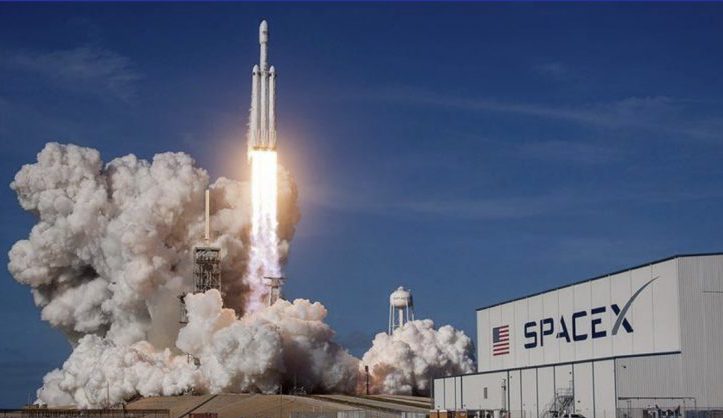SpaceX’s Starship, the colossal rocket envisioned for moon and Mars missions, experiences a “rapid unscheduled disassembly” during its ninth test flight.
SpaceX’s towering Starship rocket, a cornerstone of humanity’s aspirations for lunar and Martian exploration, encountered another significant hurdle on Tuesday evening, as its ninth demo flight concluded with the spacecraft tumbling out of control and ultimately disintegrating, The Associated Press reported.
The incident marks the latest in a series of challenging test flights for the 403-foot mega-rocket, which lifted off from SpaceX’s Starbase launch site at the southern tip of Texas.
The mission, intended to further development of the massive launch system, fell short of its primary objectives. Following liftoff, a critical failure to fully open the door intended for mock satellite release nixed that phase of the test.
Subsequently, as the spacecraft skimmed space en route to an uncontrolled landing in the Indian Ocean, it began to spin uncontrollably.
SpaceX later issued a statement confirming the spacecraft experienced what it termed “a rapid unscheduled disassembly,” or bursting apart. The company stated, “Teams will continue to review data and work toward our next flight test.”
This flight notably marked the inaugural instance of one of Elon Musk’s Starships, designed for future moon and Mars travel, flying with a recycled booster.
Contact with the booster was lost during the flight, leading to its fragmentation and impact into the Gulf of Mexico, while the spacecraft continued its trajectory towards the Indian Ocean.
Communication with the spacecraft ceased before its eventual demise, prompting SpaceX to conclude its webcast shortly thereafter.
The latest incident follows two prior Starship demos earlier this year, which also concluded prematurely, with wreckage raining into the ocean just minutes after liftoff.SpaceX’s towering Starship rocket, a cornerstone of humanity’s aspirations for lunar and Martian exploration, encountered another significant hurdle on Tuesday evening, as its ninth demo flight concluded with the spacecraft tumbling out of control and ultimately disintegrating, The Associated Press reported.
The incident marks the latest in a series of challenging test flights for the 403-foot mega-rocket, which lifted off from SpaceX’s Starbase launch site at the southern tip of Texas.
The mission, intended to further development of the massive launch system, fell short of its primary objectives. Following liftoff, a critical failure to fully open the door intended for mock satellite release nixed that phase of the test.
Subsequently, as the spacecraft skimmed space en route to an uncontrolled landing in the Indian Ocean, it began to spin uncontrollably.
SpaceX later issued a statement confirming the spacecraft experienced what it termed “a rapid unscheduled disassembly,” or bursting apart. The company stated, “Teams will continue to review data and work toward our next flight test.”
This flight notably marked the inaugural instance of one of Elon Musk’s Starships, designed for future moon and Mars travel, flying with a recycled booster.
Contact with the booster was lost during the flight, leading to its fragmentation and impact into the Gulf of Mexico, while the spacecraft continued its trajectory towards the Indian Ocean.
Communication with the spacecraft ceased before its eventual demise, prompting SpaceX to conclude its webcast shortly thereafter.
The latest incident follows two prior Starship demos earlier this year, which also concluded prematurely, with wreckage raining into the ocean just minutes after liftoff.
In an effort to address past issues and enhance capabilities, SpaceX had undertaken corrective actions and upgrades, including modifications to the latest spacecraft’s thermal tiles and the installation of special catch fittings.
Although this particular spacecraft was intended to sink in the Indian Ocean, the company aimed to test these add-ons for future versions designed to be captured back at the launch pad, mirroring the booster recovery strategy.





